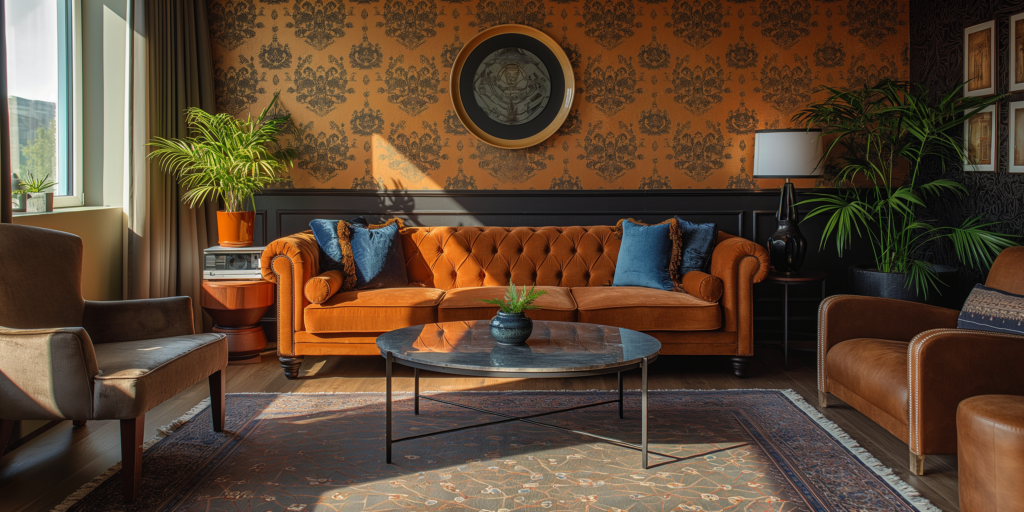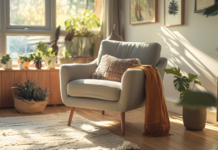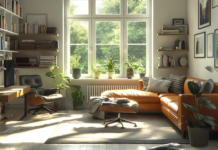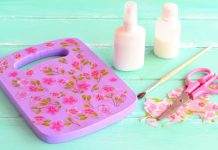The Victorian era, renowned for its ornate and elaborate designs, inspires modern interior decor enthusiasts. Named after Queen Victoria’s reign (1837-1901), this period’s rich aesthetics are characterised by intricate patterns, luxurious fabrics, and detailed craftsmanship. But how can you bring these historical elements into a contemporary home without overwhelming it?
Here’s a guide to seamlessly integrate Victorian decor into your modern living space.
Understanding Victorian-Era Design Principles

Historical Context
The Victorian era is synonymous with opulence and grandeur. Homes from this period were designed to showcase wealth and status, featuring heavy, dark wood furniture, rich colour palettes, and elaborate decorations. Understanding this context helps to appreciate the intricate details and rich materials that define Victorian decor.
Key Elements
- Rich Colors: Deep reds, greens, blues, and earthy tones.
- Intricate Patterns: Floral designs, damask, and paisley.
- Luxurious Fabrics: Velvet, brocade, and damask.
- Detailed Craftsmanship: Ornate carvings, mouldings, and furniture.
Modern Interpretation of Victorian Design
Balancing Act
The key to incorporating Victorian elements into a modern home is balance. Select specific features to highlight, ensuring they complement rather than overpower your existing decor. This approach allows you to enjoy the grandeur of Victorian style without compromising on modern simplicity and functionality.
Selective Incorporation
Instead of fully immersing your home in Victorian style, choose a few standout pieces or patterns. This selective approach helps maintain a contemporary feel while adding historical charm. For instance, a single Victorian-style armchair or a decorative mirror can serve as a focal point in an otherwise modern room.
Colour Palette
Traditional Victorian Colors
Victorian interiors often featured deep, rich colours. Think of opulent shades like burgundy, emerald, and navy alongside rich earth tones. These colours were used to create a sense of warmth and luxury.
Modern Twist
Use these colours as accents rather than the primary palette. For example, a modern room with neutral walls can be enhanced with a deep red Victorian-style sofa or emerald green throw pillows. This approach ensures the space remains light and airy while incorporating the rich hues of Victorian decor.
Furniture Selection

Classic Victorian Furniture
Victorian furniture is known for its heaviness and dark wood with intricate carvings. Pieces like ornate sideboards, upholstered chairs, and detailed bed frames were common. These elements can add a sense of history and grandeur to your home.
Modern Adaptation
Opt for furniture that retains the intricate designs but in lighter wood or painted finishes. This keeps the pieces feeling fresh and less imposing. For example, a Victorian-style chair painted in soft white or pastel can blend seamlessly into a modern room. Additionally, consider reupholstering classic Victorian pieces with contemporary fabrics to bridge the gap between old and new.
Fabrics and Textiles
Victorian Fabrics
Velvet, brocade, and damask were the fabrics of choice during the Victorian era, adding to the sense of luxury. These materials were used for everything from curtains to upholstery, creating a rich and opulent atmosphere.
Modern Use
Incorporate these rich fabrics through accents such as throw pillows, curtains, or an upholstered chair. Balance them with lighter, contemporary fabrics to avoid a heavy, overbearing look. For example, a velvet throw pillow on a sleek, modern sofa can add a touch of Victorian elegance without overwhelming the room.
Patterns and Wallpaper

Victorian Patterns
Floral, damask, and paisley patterns were prevalent in Victorian homes, often found on wallpaper, upholstery, and rugs. These patterns add depth and visual interest to a space.
Contemporary Approach
Use Victorian-style wallpaper on an accent wall to create a focal point without overwhelming the room. Pair it with modern, sleek furniture to balance old and new. For example, a damask-patterned accent wall behind a minimalist bed can create a striking visual contrast.
Decorative Elements
Victorian Decor
Chandeliers, ornate mirrors, and detailed mouldings were staples of Victorian decor, adding elegance and sophistication. These elements can bring a sense of grandeur and history to your home.
Modern Touch
Select one or two statement pieces like a Victorian chandelier or an ornate mirror to add a touch of grandeur. Ensure the rest of your decor is streamlined to avoid a cluttered look. For instance, a grand chandelier in a dining room with modern furniture can create a balanced and elegant space.
Artwork and Accessories
Victorian Art
Portraits, landscapes, and still-life paintings in gilded frames were popular in the Victorian era. These artworks add a sense of history and sophistication to a space.
Contemporary Blend
Mix Victorian-style artwork with modern pieces for an eclectic, curated look. Use simpler frames to keep the art from feeling too heavy or dated. For example, a Victorian-style portrait in a minimalist frame can create a unique juxtaposition with contemporary art pieces.
Flooring

Victorian Floors
Victorian homes often featured hardwood floors adorned with intricate rugs. These elements add warmth and texture to a space.
Modern Adaptation
Use a Victorian-style rug as a focal point on modern flooring, such as polished concrete or minimalist hardwood. This creates a striking contrast and adds warmth to the space. Additionally, consider using rugs with Victorian patterns in areas like hallways or entryways to create a welcoming atmosphere.
Lighting
Victorian Lighting
Lighting fixtures from the Victorian era were typically heavy and ornate, featuring intricate designs and dark finishes. These fixtures add a touch of elegance and history to a space.
Modern Solutions
Choose lighting with Victorian design elements but a more streamlined look. For example, a chandelier with a Victorian shape but in a modern finish like brushed nickel. Mix with modern fixtures to ensure adequate lighting and maintain a contemporary feel. Additionally, consider using Victorian-style sconces or table lamps to add ambient lighting and enhance the historical charm.
Personal Touch and Balance
While incorporating Victorian elements, ensure the space reflects your style. Add decor items that resonate with you and tell your unique story. This can include family heirlooms, travel souvenirs, or contemporary art pieces with personal significance.
Achieving a cohesive look requires blending Victorian design’s ornate beauty with modern aesthetics’s simplicity and functionality. Aim for a harmonious balance where historical charm and contemporary style coexist beautifully. For instance, a modern living room with Victorian-inspired accessories can create a sophisticated yet comfortable atmosphere.
Additional Tips and Tricks

Mix and Match Styles
Don’t be afraid to mix and match different design styles. Combining Victorian elements with other styles like mid-century modern or industrial can create a unique and personalised space. This approach allows you to highlight the best features of each style while creating a cohesive and eclectic look.
Focus on Details
Pay attention to the small details that can make a big impact. Victorian design is all about intricate details, so add decorative elements like ornate doorknobs, vintage picture frames, or detailed mouldings to enhance the historical charm.
Layer Textures
Layering different textures can add depth and richness to your space. Combine Victorian fabrics like velvet and brocade with modern materials like leather and metal to create a tactile and visually interesting environment.
Embrace Eclecticism
An eclectic approach allows you to blend elements from different eras and styles. This creates a dynamic and engaging space that reflects your personality and taste. Mix Victorian antiques with modern furniture, contemporary art, and global accents to create a one-of-a-kind interior.
Create Focal Points
Use Victorian elements to create focal points in your rooms. A grand fireplace, an ornate mirror, or a luxurious chandelier can serve as the centrepiece of a room, drawing attention and setting the tone for the rest of the decor.
Incorporate Greenery
Adding plants and greenery can bring life and freshness to a space dominated by rich Victorian colours and heavy furniture. Consider placing potted plants, hanging planters, or a Victorian-style conservatory to create a vibrant and balanced environment.
Wrapping Up
Revamping your modern home with Victorian-era decorating tips can transform your space into a unique blend of historic elegance and contemporary comfort. By thoughtfully incorporating rich colours, intricate patterns, luxurious fabrics, and detailed craftsmanship, you can create a space that feels both timeless and inviting. Remember, balance and selective incorporation are key to ensuring your home remains stylish and functional.
So, whether you’re a seasoned interior designer or a DIY enthusiast, these tips will help you bring a touch of Victorian opulence into your modern home, creating a truly one-of-a-kind space. Enjoy the process of transforming your home into a beautiful blend of past and present!
By following these steps, you can successfully revamp your space, merging the ornate charm of the Victorian era with the sleek simplicity of modern design. Enjoy the process of transforming your home into a beautiful blend of past and present!





















